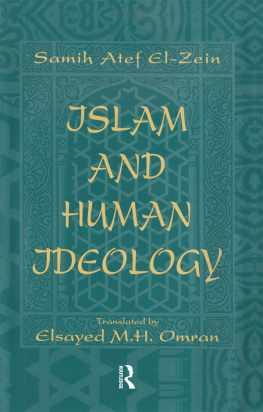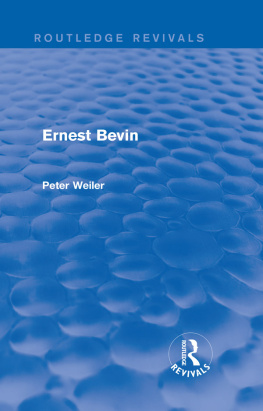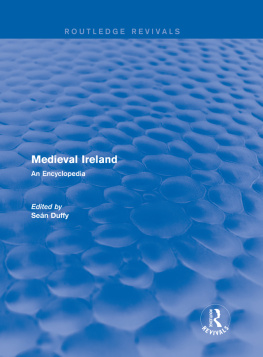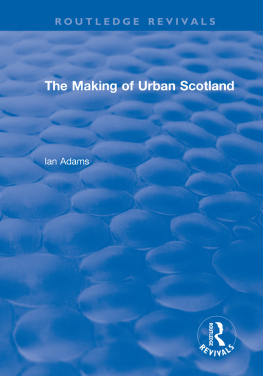
Routledge Revivals
Arab Society
The Arab world has long been subjected to super-power rivalry for influence and control. The area has been characterized by bloody conflict with Israel and the internal instability that has been particularly prevalent in the last few years. Whilst these political struggles have been highly visible and at times spectacular over the decades, other transformations have taken place within the societies and peoples of the region, on a less pronounced although just as profound scale. The integration of the region into the world economy and the spread of Islamic revivalism are perhaps the most significant of these transformations. This volume, inspired by a lecture series on the Arab world in transition at the American University, Washington D.C., was first published in 1985. It discusses a wide range of issues, from economic to religious, which together form an in-depth analysis of the complex processes of transformation in Arab society. This is a fascinating work that holds the same interest and value to scholars and students of Middle Eastern history, politics and domestic affairs, as it did when it was first published.
Arab Society
Continuity and Change
Samih K. Farsoun
First published in 1985
by Croom Helm Ltd
This edition first published in 2013 by Routledge
2 Park Square, Milton Park, Abingdon, Oxon, OX14 4RN
Simultaneously published in the USA and Canada
by Routledge
711 Third Avenue, New York, NY 10017
Routledge is an imprint of the Taylor & Francis Group, an informa business
1985 Samih K. Farsoun
All rights reserved. No part of this book may be reprinted or reproduced or utilised in any form or by any electronic, mechanical, or other means, now known or hereafter invented, including photocopying and recording, or in any information storage or retrieval system, without permission in writing from the publishers.
Publishers Note
The publisher has gone to great lengths to ensure the quality of this reprint but points out that some imperfections in the original copies may be apparent.
Disclaimer
The publisher has made every effort to trace copyright holders and welcomes correspondence from those they have been unable to contact.
A Library of Congress record exists under LC control number: 85019446
ISBN 13: 978-0-415-82916-8 (hbk)
ISBN 13: 978-0-203-51734-5 (ebk)
Arab Society
CONTINUITY AND CHANGE
Edited by
SAMIH K. FARSOUN
1985 Samih K. Farsoun
Croom Helm Ltd, Provident House, Burrell Row,
Beckenham, Kent BR3 1 AT
Croom Helm Australia Pty Ltd, First Floor,
139 King Street, Sydney, NSW 2001, Australia
British Library Cataloguing in Publication Data
Arab society : continuity and change.
1. Arab countries 2. Near East
I. Farsoun, Samih K.
956 DS44
ISBN 0709910827
Croom Helm, 51 Washington Street,
Dover, New Hampshire 03820, USA
Library of Congress Cataloging in Publication Data
Main entry under title:
Arab Society.
Includes index.
1. Near EastAddresses, essays, lectures.
2. Africa, NorthAddresses, essays, lectures.
I. Farsoun, Samih F.
DS42.4.A75 1985 909.0974927 85-19446
ISBN 0-7099-1082-7
Phototypeset by Sunrise Setting, Torquay
Printed and bound in Great Britain by
CPI Antony Rowe, Chippenham and Eastbourne
CONTENTS
Hanna Batatu, Center for Contemporary Arab Studies, Georgetown University.
Samih K. Farsoun, Department of Sociology, the American University, Washington, DC.
Nikki R. Keddie, Department of History, University of California, Los Angeles.
Roger Owen, Department of History, St Antonys College, Oxford.
Edward W. Said, Department of English and Comparative Literature, Columbia University.
Hisham Sharabi, Department of History, Georgetown University.
Bassam Tibi, Department of Political Science, University of Gttingen.
I would like to acknowledge with deep gratitude a benefactor and friend whose generosity made possible the holding of the lecture series on the Arab world in transition at the American University, Washington, DC, which resulted in this book. He wishes to remain anonymous, although he should know that without his help neither the lectures nor the book would have been possible.
I would also like to thank Danny Reachard for all the hard work he did in managing the logistics of the lecture series and in the production of the manuscript.
Finally, I would like to thank Helen Koustenis and Kathleen Kennedy-Corey for all the administrative help they so generously gave.
Editors Note (Transliteration of Names)
In the following chapters there are inconsistencies with regard to the transliteration of Arab and Iranian names. The transliteration of names is not standardised in order to preserve the stylistic integrity of the individual authors writing.
Continuity in Change: Themes in Arab Societies
The context for which these chapters were written was a lecture series on the Arab world in transition at the American University, Washington, DC. It was held in the spring of 1984 to address themes in Arab society (and Iran) in an attempt to analyse the complex processes of social transformation. The Arab world and Iran have long been subjected to great-power and super-power rivalry for influence and control over the region, but this area has also been characterised by struggles against not only external power domination, but also a powerful enemy (Israel) within the region. While these political struggles have been visible, even spectacular, and the daily news reports reflect that, other transformations have been more silent but just as profound for the societies and the peoples of the area. Of greatest significance is the integration of the region into the world economy. The region has not been a passive recipient of external influences, rather it has developed a logic and dynamic of its own. Indeed, the region is composed of societies enormously varied in their economic, social, political and cultural structures. The character of their multiple, varying and variable linkages with the West thus creates extremely complex dynamics internal to individual states and in the region as a whole. These external linkages differentially impact on the structures and processes of the societies, but place effective and somewhat similar limits on the way they change.
This is also a region which shares very importantly in cultural traditions, historical heritage, pre-modern social structures, institutions, ideology and consciousness. It is this mix of shared commonalities and of structural diversities in the context of powerful external, regional and local forces of change which produce the uniqueness of the contemporary Arab (and Iranian) social formations. The varied and variable processes of interaction which link the international with the local structures have long been in place but have recently taken a quantum leap in scope and intensity since the rise of oil prices in the rapid accumulation of wealth in the region, and commensurate rapid economic growth and social change. This is the context which the authors of this collection address.












